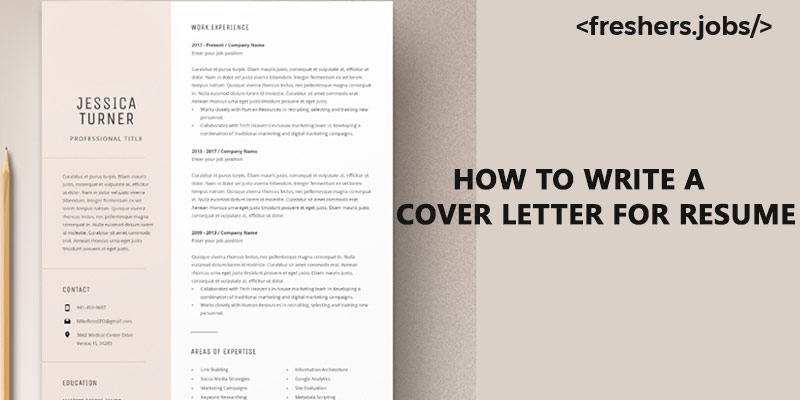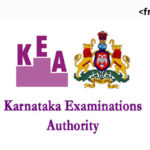Even though cover letters are not always necessary, many recruiters still use them to learn about a candidate’s skills, experience, and background for the job. Including a cover letter is also a great way to show the recruiter that you are interested in the job. The key to writing good cover letters is quickly explaining how your work experience fits the job and the company’s culture.

This blog shows you how to write a cover letter that gives potential recruiters a great first impression.
Let us know what a Cover Letter is
A cover letter is also, also called an application letter, is a three to four-paragraph memo you send to recruiters in private or government firms to explain why you want the job and are qualified. It is usually sent along with your resume when you apply for a job. This letter should show your skills, experience, and achievements relevant to the job you want. Cover letters give you more space than your resume to discuss your work experience and explain why you are the apt one for the job and company.
A well-written structured cover letter can always help you stand out from other applicants and make a good impression on recruiters. Before you write your cover letter for job, you should research the company and job for which you are applying. This will help you avoid writing a cover letter that is too general. Read to know how to research a company.
Why is Cover Letter important?
Some people might think of a cover letter as an old-fashioned way to introduce themselves, but it is more than that. A cover letter is your chance to go beyond what is on your resume and explain how your skills and experience fit the job. Know the Best skills to include in your resume.
Just like your resume is your first impression, your cover letter is also your best chance to show all about yourself and what you are good at.
Let us know how to write a cover letter for resume.
How to Put Together a Cover Letter
A cover letter is similar to most other business letters but has some parts others don’t have. Most of the time, a cover letter is written with more creativity. But it is important to remember that a cover letter should only be one page long. In general, all of the following are part of it:
Contact Information
This is one of the essential parts of the cover letter because it lets the employer know how to get in touch with the applicant. Your contact information does not have to be in the header like it is in a resignation letter. Instead, it can be in the body of the letter.
Salutation
The greeting should be formal and easy to understand in a resume covering letter. Always you can try to look for as much as possible about the person in charge of hiring for the job. In an ideal world, the greeting should be a formal greeting to the hiring manager. But if you can’t find the hiring manager’s name or email address, it’s OK to write “Dear Recruiter.”
The Introduction
The introduction of your cover letter is the first paragraph. Use the first sentence to grab the reader’s attention and make them want to read the letter. Also, the first sentence should show that you are interested in the freshers jobs. Here are some ideas for it
- A professional or educational experience in the past that made you interested in the company or industry,
- A personal connection or contact that helped you become interested in the company or industry,
- A story that connects to your company or any trait about the company that makes you want to work there.
- A current event relates to the company, industry, or role you are applying for.
The rest of the introduction should explain why you want to work for that organisation, how your skills, abilities and experiences will help you do well in the job you are applying for, and know what is cover letter
The Body of the Letter
Your cover letter’s main body can have one or two paragraphs, depending on how long the rest of your letter is. Focus on how best you are for the company and job position. The best thing to do is to focus on something in the job description and back it up with something from your resume and cover letter.
Talk about hard technical skills in the first sentence of the body. Choose one or two of the hard skills from the job description. These are specific tasks that need to be done for the job. Explain how the skills you have gained through past experiences will help you do these tasks.
In the same way, use the second paragraph of the body to talk about soft skills like teamwork, personality, interpersonal skills, communication etc. Most of the time, the job description lists the soft skills the recruiter wants. Like with hard skills, choose one or two soft skills and use your experiences to show how to fit you are as a candidate.
A Thank-You Ending
“Sincerely” is usually used as a sign-off at the end of a cover letter for resume.
Signature
The letter should be signed by hand on the hard copy, but a digital signature can be used on the digital copy.
Writing Tips for Cover Letters
Here are a few quick ways and preparation tips to improve your cover letter writing:
Add more to your resume
Remember that the cover letter is an extension of your resume. Say different things that were on your resume. Use the cover letter to explain these points in more detail.
S.T.A.R. Method
This method can help you write the body of your cover letter:
S – Situation: what was going on when you solved the problem? Why did you need to step in?
T – Task: Task or what needed to be done to improve things. What were you trying to achieve? What did you want to get done?
A – Action: the specific steps you took to finish the task.
R – Result: the result of what you did. Give numbers to things to help the employer figure out how much you contributed.
The Recruiter based Perspectives
When writing a cover letter for resume, the most important thing to remember is that you are not writing to talk about yourself. You are registering to speak about the company, the job, and how you are a good fit. Every sentence in the cover letter should be about what the company wants and how you can give it to them.
The biggest mistake applicants make is putting too much emphasis on their careers and experiences. Instead of discussing yourself, you should discuss what the company needs for the job and how you meet those needs.
Professional Cover Letter
There are three different kinds of cover letter for job for professionals:
- Application cover letters,
- Prospecting cover letters, and
- Networking cover letters
The first one is the most common and is sent along with a resume. The second one is more of a question about any job openings at a potential company. The third kind only happens sometimes. Job seekers still send it to former coworkers, friends, and other contacts to see if they know of any job openings or jobs alert.
Internship Cover Letter
When someone has worked before, it is much easier to write a cover letter for them. But it can be challenging for someone who has never worked before to write one for an internship because they don’t have any prior work experience.
The happy good news is that even if you have little experience, you can still sell yourself in your cover letter by mentioning any training, seminars, or volunteer work you have done in the past. It can also help to talk briefly about the applicant’s future goals, which should be related to the job they are applying for. Read how to write a Resume for an Internship.
Conclusion
I hope you have an idea of How to write a cover letter in a resume. The main point to be kept in mind is to have a structured resume. As we say, the First impression is the best impression. Your resume and cover letter must be the first impression for recruiters to snatch you into their organisation. The first sentence of your conclusion should connect in some way to the first sentence of your introduction. This will make your cover letter make sense. Also, use the conclusion to thank the employer for taking the time to read your application and think about it. Lastly, tell the recruiter that you wish to hear from them soon.



